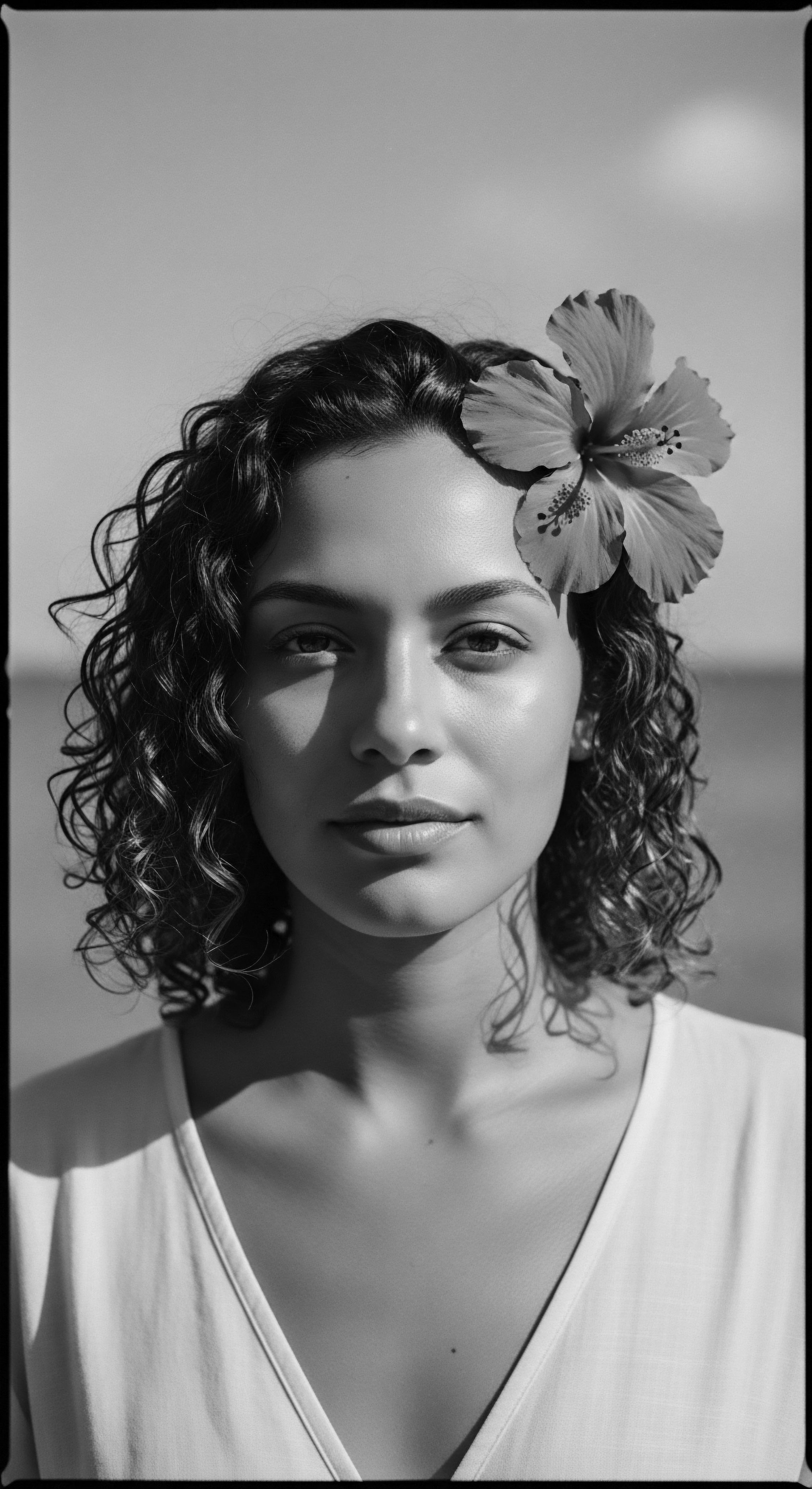
Roots
Consider for a moment the very strands that spring from your scalp. These are not merely fibers; they are echoes from an ancient source, imbued with the wisdom of generations and the very breath of the earth. From the deepest ancestral memory, textured hair has served as a silent guardian, a testament to humanity’s profound connection with its environment.
To ask if its density aids in climate regulation prompts a journey not only into biology but into the living heritage of survival and adaptation. It is a question that invites us to witness how the coiled helix, in its very structure, holds secrets of thermal balance, passed down through the ages.

The Sacred Geometry of Hair
Within the biological blueprint, the unique architecture of textured hair reveals a story of remarkable adaptation. Unlike straighter forms, each strand of highly coiled hair—whether a gentle wave or a tightly bound spring—possesses an elliptical cross-section, contributing to its inherent tendency to curl upon itself. This intrinsic curvature, replicated across countless individual strands, culminates in a canopy of volume and a collective density that stands aloft from the scalp.
This loft, this three-dimensional arrangement, creates a matrix of air pockets, forming an insulating layer that buffers the head from external atmospheric shifts. This natural architecture served as a primal shield for early humans inhabiting equatorial regions where solar intensity was constant.
Textured hair, with its unique coiled structure, creates a natural air cushion that insulates the scalp and assists in maintaining a balanced microclimate.
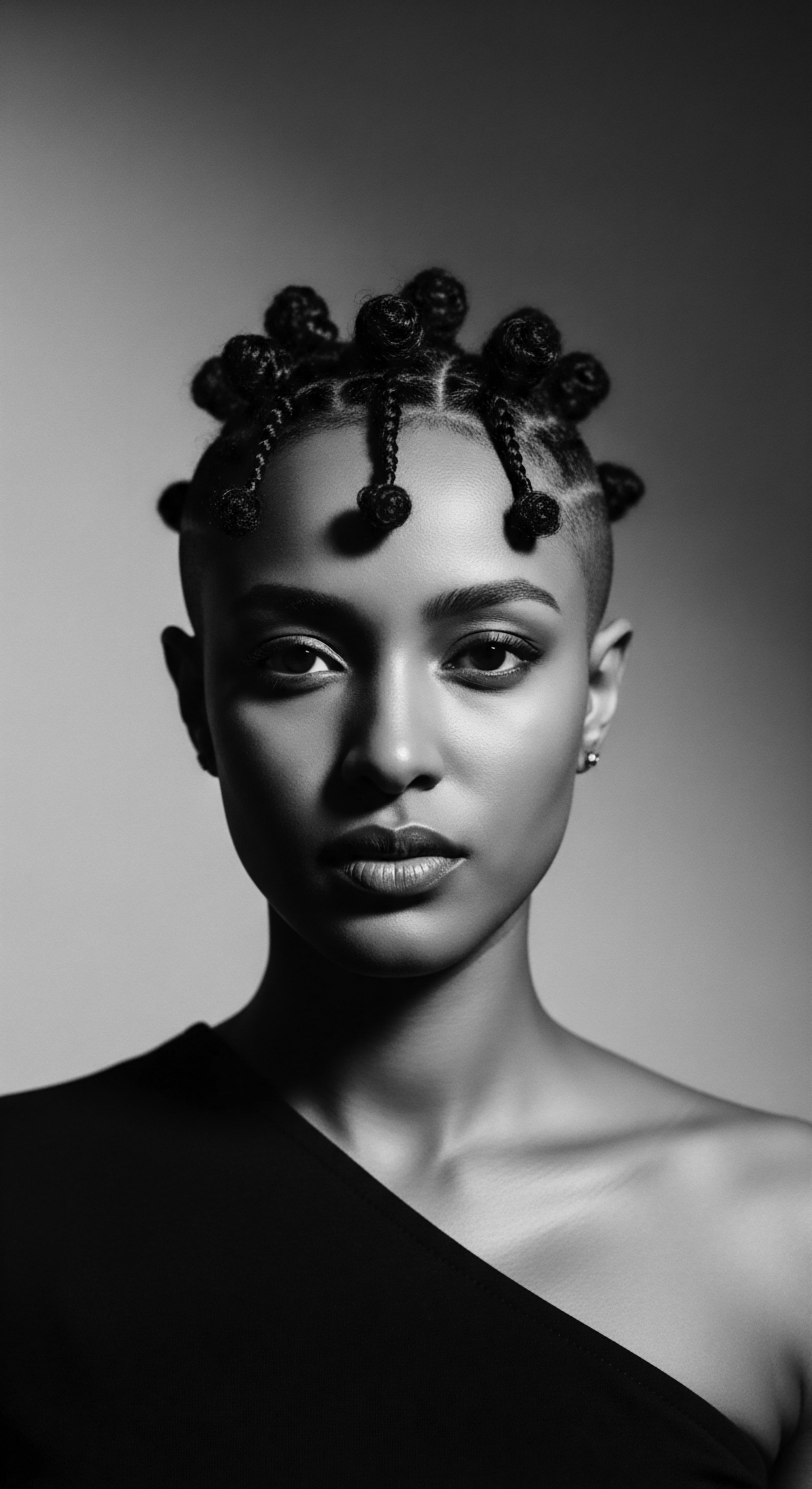
Ancestral Lexicon and Hair’s Form
The language of textured hair, long before scientific categorization, was steeped in observation and utility, rooted deeply in community. Ancestral communities, lacking modern microscopes, understood hair’s properties through lived experience and its response to the world around them. They observed how hair behaved under the harsh sun or during cool desert nights, giving rise to practices that worked in concert with hair’s natural capabilities.
While terms like “thermal diffusivity” or “radiative heat gain” belong to contemporary science, the recognition of hair’s protective attributes was fundamental to ancient care rituals. The dense coils offered a natural defense, a shield against sun’s unrelenting embrace, and a warmth keeper when temperatures dipped.

Hair’s Growth Cycles and Environmental Whispers
The cycles of hair growth, from its active anagen phase to its resting telogen, have always been subtly influenced by environmental factors, even if ancient populations did not dissect them with scientific precision. Nutrition, availability of water, and exposure to the elements shaped not only hair’s health but its very behavior. In environments where intense solar radiation was a constant presence, the evolutionary selection favored hair forms that could effectively minimize heat gain and reduce the physiological cost of cooling, such as sweat production.
This inherent protection allowed for the development of larger brains without the undue risk of overheating, a testament to textured hair’s quiet, yet profound, role in human flourishing (Lasisi et al. 2023).
Indeed, a study using a thermal manikin and human hair wigs demonstrated that Tightly Curled Hair Offers Greater Protection from Solar Heat Gain Than Straight Hair, Thereby Minimizing the Need for Evaporative Cooling and Conserving Precious Water. This scientific validation echoes the intuitive ancestral understanding of hair as a functional, adaptive element, not just an aesthetic one. The density of textured hair, therefore, is not a coincidence; it is a finely tuned biological response, a legacy coded in every spiraling strand, born of necessity and shaped by the very sun and wind of our earliest hominid landscapes.

Ritual
From the foundational biology of the strand, we turn to the living ritual, the deliberate practices that have long honored and harnessed the inherent capabilities of textured hair. Across the African diaspora and in Indigenous communities, the ways hair is styled, adorned, and cared for are never accidental; they are cultural statements, social markers, and, critically, pragmatic responses to environmental realities. The density of textured hair, so deeply intertwined with its protective attributes, shaped these ancient techniques, transforming raw biology into acts of profound cultural expression and survival.

Styles of Shielding and Sustenance
Protective styling, a widely recognized term today, finds its roots in practices honed over millennia, long before any formal lexicon existed. Styles like Braids, Twists, and Locs, often tightly bound and collectively dense, served as ingenious mechanisms for preserving hair health while simultaneously offering a shield from the elements. Imagine the sun beating down on open savannas or the biting chill of arid nights; these intricate coiffures minimized exposure of the delicate scalp and hair shafts, thereby reducing moisture loss, preventing breakage, and regulating the microclimate directly around the head.

The Ingenuity of Ancestral Adornment
Traditional hair adornments and head coverings, too, played a significant role in leveraging hair’s protective qualities. While headwraps often signified social status, marital standing, or spiritual devotion, they also provided a practical layer of defense against sun, dust, and wind. Archaeological evidence from ancient African societies, such as the Kingdom of Ghana, suggests headwraps crafted from locally woven textiles served functional purposes in arid climates, shielding against harsh environmental conditions. The layered fabric, combined with the innate insulating properties of dense, coiled hair underneath, created a barrier that helped regulate temperature, keeping the head cooler in intense heat and warmer in cooler conditions.
Ancestral styling practices, from intricate braids to headwraps, harnessed hair’s natural density to create personal microclimates, offering protection and comfort through the ages.
The artistry of these styles was not separate from their utility. For example, the meticulous patterns of Cornrows, laid close to the scalp, not only held symbolic meaning related to agriculture and communal order but also effectively gathered the hair, creating a compact, insulating mass that minimized heat absorption. This practice, widely documented across various African cultures, speaks to a holistic understanding where beauty, culture, and environmental adaptation were inextricably linked.
| Traditional Practice Intricate Braiding/Locs |
| Heritage Significance Community identity, status, spiritual connection, historical maps during enslavement |
| Microclimate Regulation Aspect Minimizes direct scalp exposure; traps air for insulation; reduces moisture loss; provides physical barrier against elements |
| Traditional Practice Headwraps/Geles |
| Heritage Significance Cultural pride, resistance, modesty, social signaling |
| Microclimate Regulation Aspect Adds layers for thermal buffering; shields from sun/dust; retains scalp warmth in cool air; aids in moisture retention |
| Traditional Practice Traditional Oiling/Buttering |
| Heritage Significance Holistic health, aesthetic appeal, ceremonial use |
| Microclimate Regulation Aspect Seals cuticle, preventing moisture evaporation; enhances hair's natural barrier against environmental stressors; contributes to thermal stability |
| Traditional Practice These practices, steeped in heritage, illustrate a timeless understanding of hair's role in personal environmental management. |
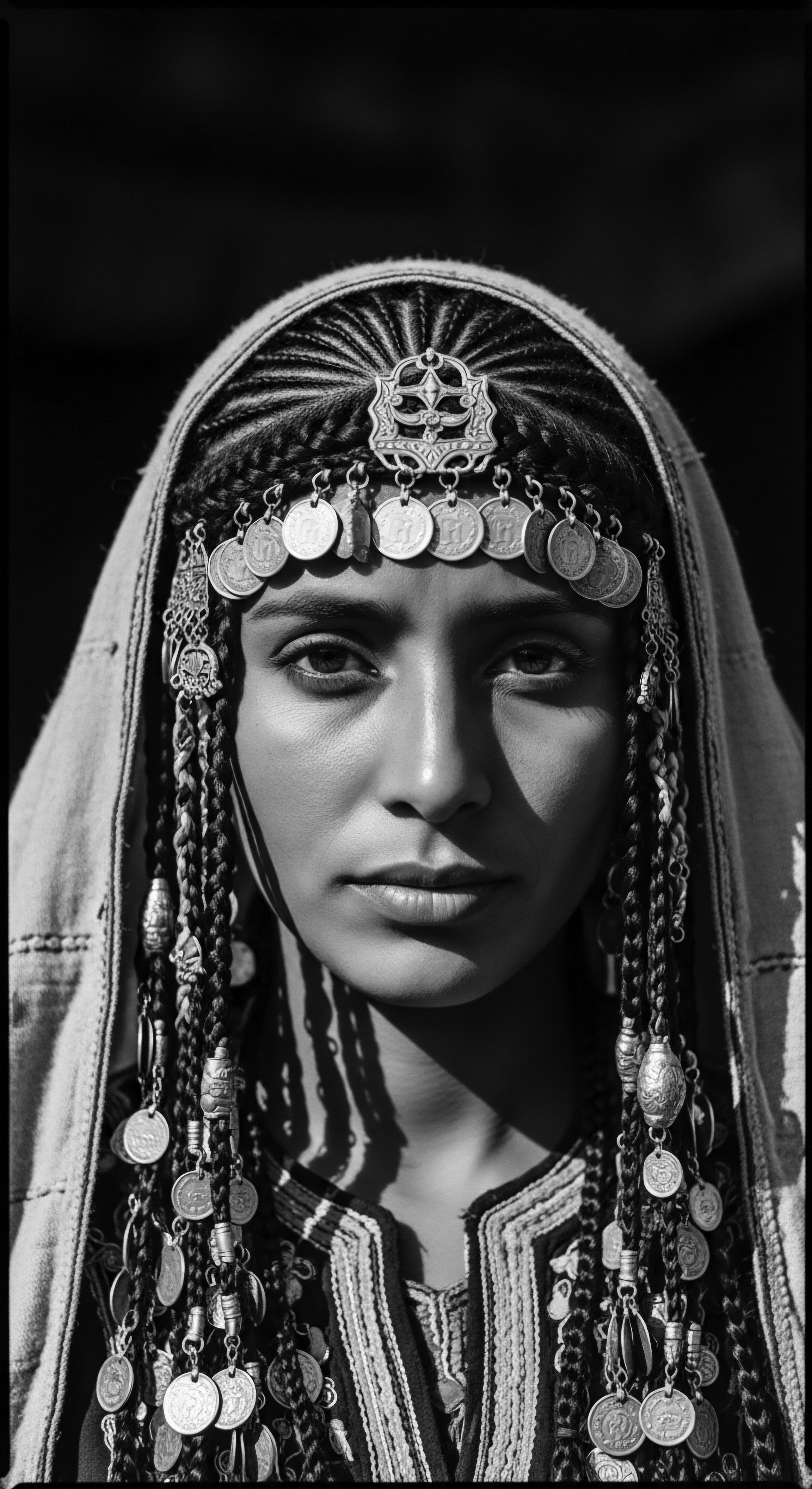
Tools Forged by Need
The tools used for hair styling and care were often born of necessity and shaped by the very texture of the hair they served. From simple wooden combs designed to navigate tight coils to specialized braiding implements, these instruments were part of a continuum of care that honored the hair’s natural form and its protective density. The use of natural fibers and materials for wraps, the thoughtful application of plant-based oils and butters—these were not random acts. They were informed by centuries of observing how hair, particularly dense, coiled hair, interacted with the surrounding atmosphere, how it responded to sun, wind, and humidity.
The tender thread of ritual weaves through generations, a testament to how cultural acumen, scientific observation, and artistic expression intertwined to create a legacy of hair care. The methods developed, often intuitively, recognized and amplified textured hair’s innate ability to act as a personal climate regulator, protecting and preserving not only the strands themselves but the vitality of those who wore them.

Relay
The transmission of knowledge across generations, the deep currents of ancestral wisdom, informs our contemporary understanding of textured hair, especially its thermal properties and its role in personal well-being. This ongoing relay of insight bridges the elemental biology of the past with the scientific inquiries of the present, allowing us to perceive textured hair’s density not as a mere characteristic, but as a living legacy with demonstrable adaptive advantages. The examination of its capacity for microclimate regulation delves into the biophysical mechanisms that have served humanity for eons, offering a rich context for modern care.

The Biophysics of Thermal Regulation
At its most fundamental level, the capacity of textured hair’s density to influence temperature arises from principles of physics. The tightly packed, coiling strands create a voluminous arrangement that effectively traps air within its structure. Air, being a poor conductor of heat, acts as a natural insulator. This trapped air layer reduces the rate of heat transfer, meaning it slows down heat absorption from the sun in hot environments and minimizes heat loss from the scalp in cooler conditions.
Recent scientific investigations have cast a luminous light upon this ancient adaptation. A landmark study published in the Proceedings of the National Academy of Sciences (Lasisi et al. 2023) utilized thermal manikins—human-shaped models programmed to simulate body heat—equipped with human hair wigs of varying curl patterns. This rigorous experiment confirmed that the presence of scalp hair significantly reduces the influx of solar radiation to the head.
Strikingly, the findings revealed that Tightly Curled Hair Provided the Most Effective Protection against Solar Radiative Heat, Surpassing the Performance of Straight and Moderately Curled Hair Types. This indicates that the architectural density and coil pattern specific to textured hair are uniquely suited for thermal management, reducing the physiological burden of sweating in intense heat and thereby conserving vital bodily fluids.
- Air Trapping ❉ The natural volume of textured hair, created by its helical structure, forms countless microscopic air pockets, acting as a buffer against temperature fluctuations.
- Solar Radiation Shield ❉ The collective mass of dense coils forms a physical barrier that deflects and disperses sunlight before it reaches the sensitive scalp.
- Moisture Equilibrium ❉ By reducing the need for excessive sweating for cooling, textured hair can help maintain more stable scalp hydration levels, which is vital for both skin and hair health.

How Do Ancestral Practices Validate Modern Science?
This scientific validation of hair’s thermoregulatory role resonates deeply with ancestral hair care practices. Consider the historical emphasis on scalp oiling and the consistent use of head coverings in various climates. These traditions, often dismissed as merely cosmetic or cultural, acquire new layers of functional significance when viewed through the lens of microclimate regulation.
For instance, traditional oils and butters, such as shea butter or various plant extracts, when applied to dense textured hair, do more than moisturize. They can seal the cuticle, enhancing the hair’s natural barrier function against environmental stressors. This barrier helps retain the moisture within the hair shaft, which in turn supports its inherent thermal properties and resilience against drying winds or harsh sun. The conscious preservation of hair’s natural state, often facilitated by protective styles and regular oiling, was an intuitive recognition of its adaptive capabilities.

The Nighttime Sanctuary ❉ Bonnet Wisdom Through Time
The ritual of nighttime hair wrapping, particularly with silk or satin bonnets, is another profound example of this heritage relay. While modern advocates promote bonnets for frizz reduction and moisture retention, their historical precedent extends to practical environmental protection. In many cultures, covering the hair at night was a way to retain warmth during cool evenings or to protect hair from dust and insects in more open dwellings.
These coverings created a stable microenvironment for the scalp and hair, akin to a personal climate chamber, ensuring the hair remained moisturized and protected from the elements that could otherwise strip its vitality. This foresight preserved the hair’s natural density and the very benefits it offered for daily comfort.
The sustained practice of maintaining hair’s natural density and health, often achieved through ancestral methods like threading or specific braiding techniques that prevent over-manipulation, directly supports its capacity for thermal regulation. These practices, honed over centuries, represent a profound, collective understanding that healthy, dense textured hair is not merely beautiful; it is inherently functional, a testament to its long-standing role in human environmental adaptation and a vital part of its living heritage.
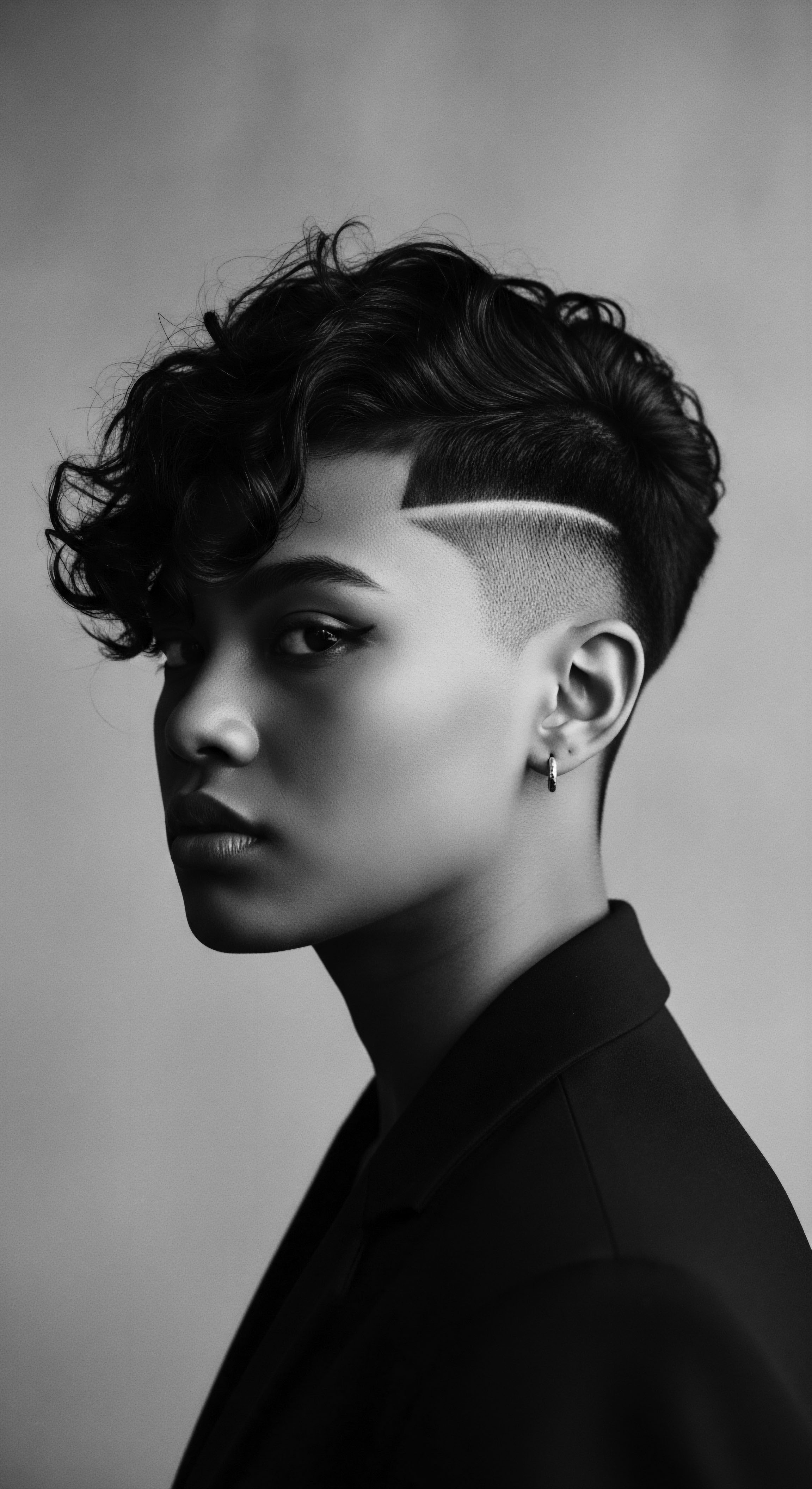
Reflection
As we draw these threads of understanding together—from the elemental biology of the coiled strand to the purposeful rituals of care and the contemporary scientific validations—a singular truth emerges ❉ textured hair, in its very density, is a living archive. It holds within its structure and its story the wisdom of resilience, a deep, abiding connection to ancestral lands and the ingenious adaptations of those who walked them. The question of whether textured hair’s density aids in climate regulation transcends a simple yes or no; it asks us to acknowledge a profound, quiet genius encoded in our very being.
The soul of a strand, as Roothea understands it, is not just about the individual fiber, but the collective spirit it embodies—a spirit that endured harsh climates, navigated new worlds, and maintained its inherent protective qualities, often in defiance of societal pressures. Our textured hair, with its remarkable capacity to manage the microclimate of the scalp, serves as a continuous whisper from the past, reminding us of human ingenuity and the body’s innate wisdom. It stands as a testament to the fact that beauty and function have always been intertwined, especially for those whose heritage demands both. In cherishing and understanding this inherent quality, we honor not only our hair but the enduring legacy of a people who have always found ways to thrive, harmonizing with the world around them, one resilient coil at a time.
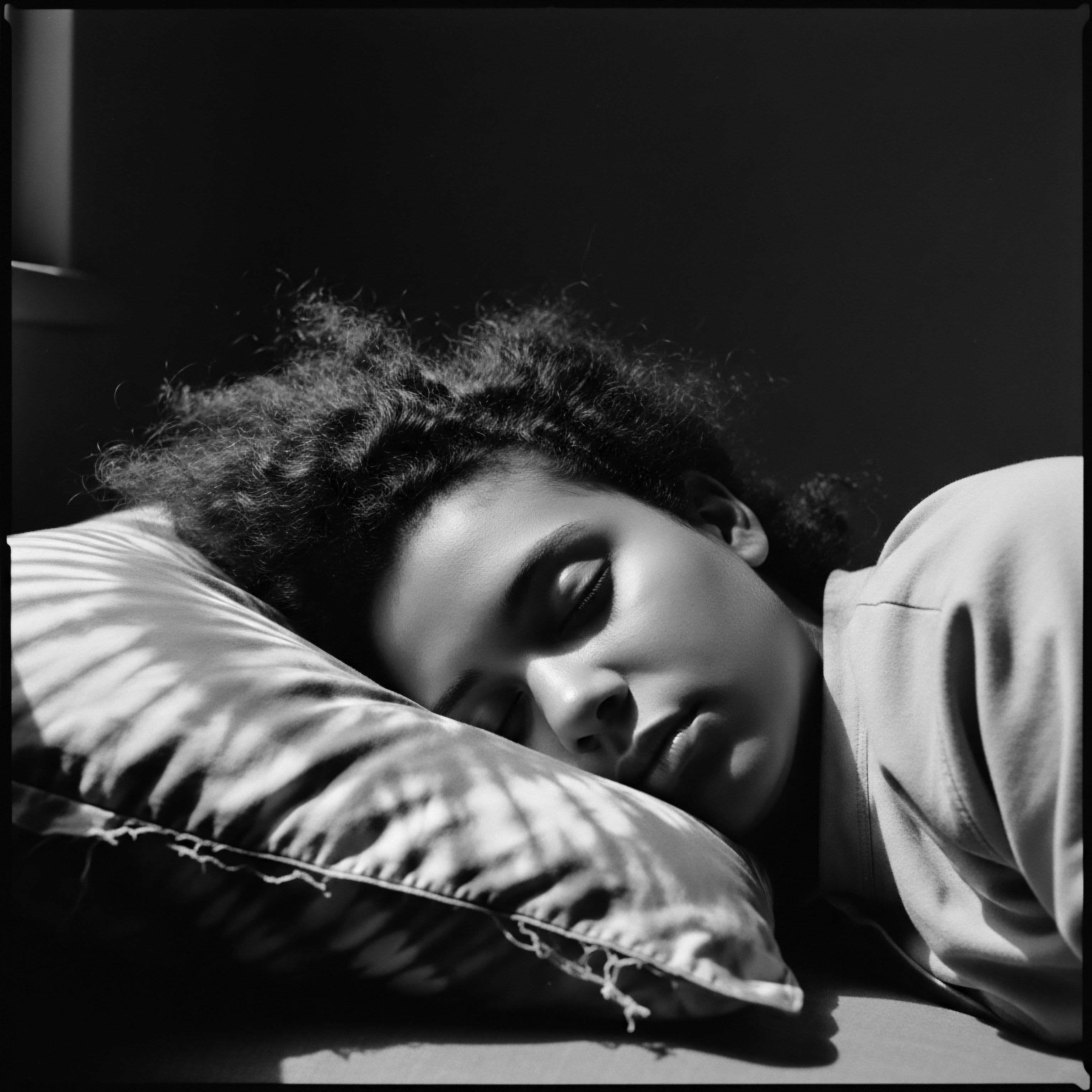
References
- Lasisi, T. Smallcombe, J. W. Kenney, W. L. & Rozenberg, D. (2023). Human scalp hair as a thermoregulatory adaptation. Proceedings of the National Academy of Sciences, 120(24), e2301760120.
- Markiewicz, E. & Idowu, O. C. (2024). Exploring the Use of Natural Ingredients for the Protection of Textured Hair from Ultraviolet Radiation ❉ An In Vitro Study. Cosmetics, 11(2), 58.
- Mohs, M. (2019). The what, why and how of curly hair ❉ a review. Proceedings of the Royal Society A ❉ Mathematical, Physical and Engineering Sciences, 475(2231), 20190563.
- Rebenfeld, L. & Monteiro, M. P. (2005). Thermal analysis of caucasian human hair. Journal of Thermal Analysis and Calorimetry, 79(2), 289-293.
- Sherrow, V. (2006). Encyclopedia of Hair ❉ A Cultural History. Greenwood Publishing Group.
- Hunter, L. E. (2009). The cultural and social meanings of African American women’s hair. Black Women, Gender, and Families, 3(2), 65-91.
- Byrd, A. D. & Tharps, L. (2014). Hair Story ❉ Untangling the Roots of Black Hair in America. St. Martin’s Press.
- Nascimento, M. (2018). Black Hair ❉ A History of Black Hair and Culture. Callaloo, 41(5).
